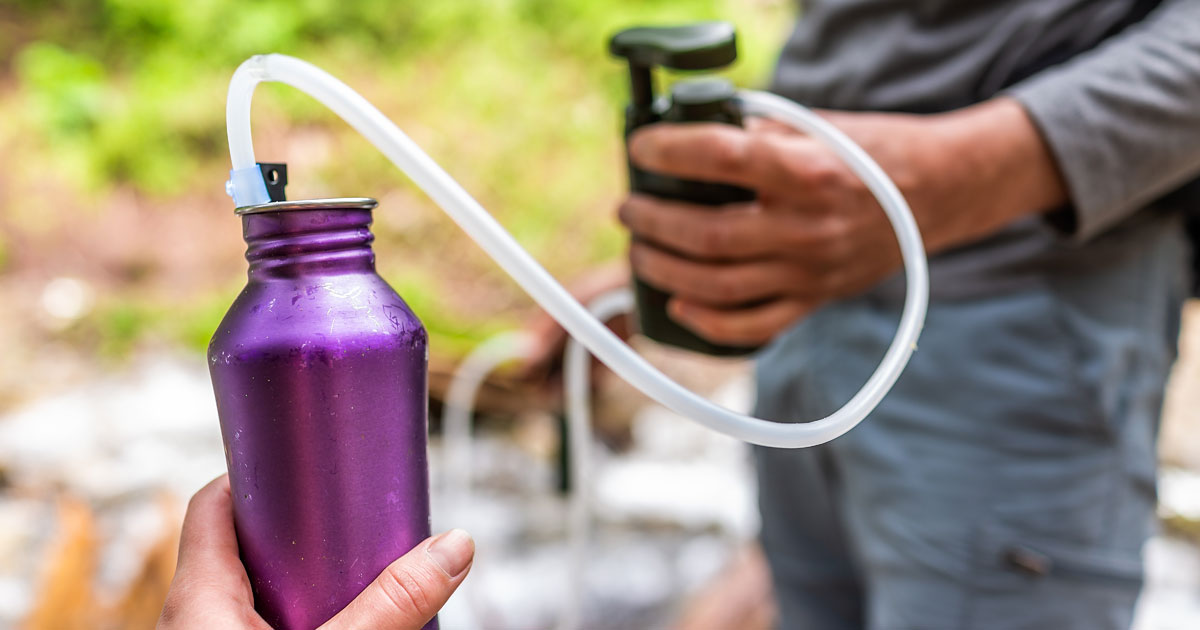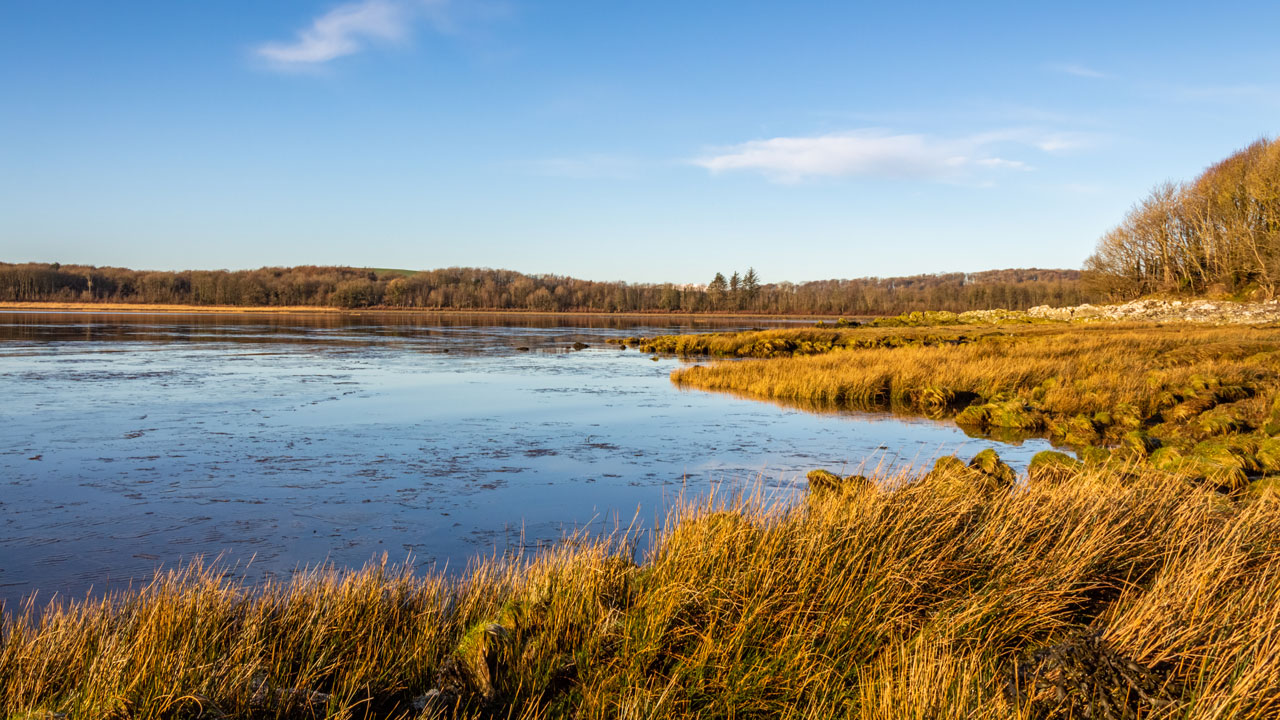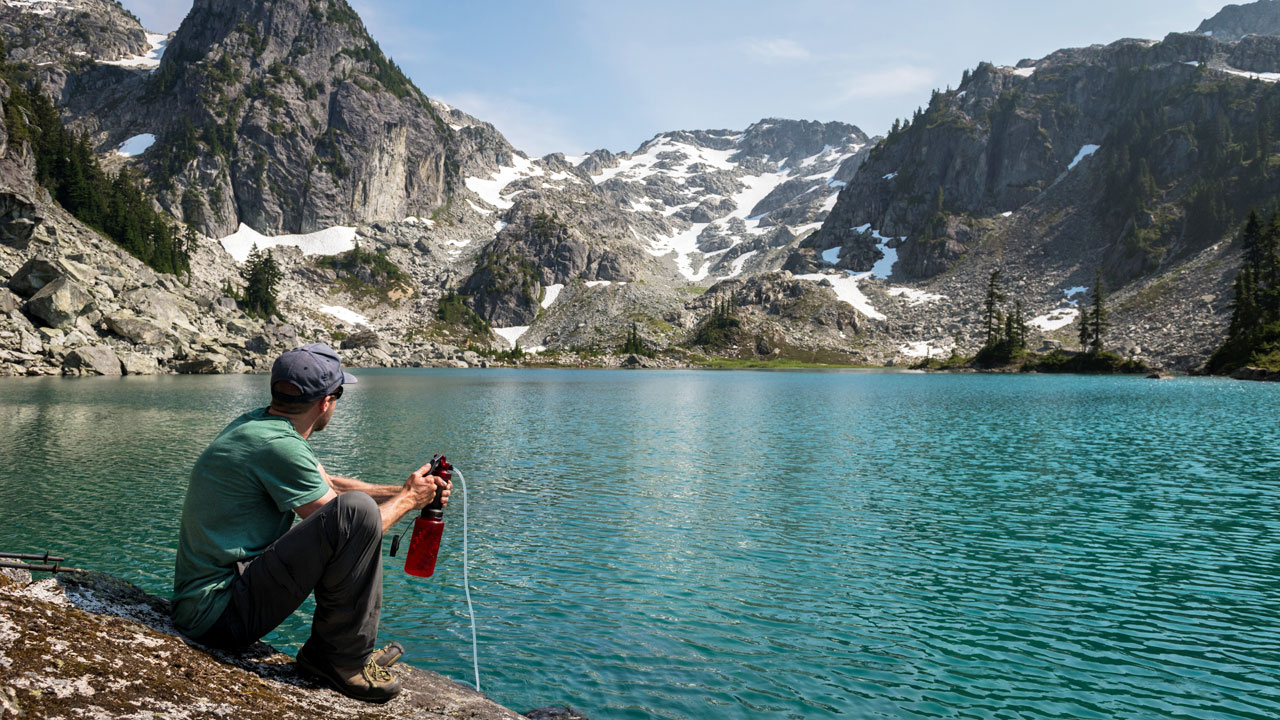How to Filter Water at Home: Emergency & Daily Guide
 Andrew
November 26, 2025
Andrew
November 26, 2025

- Explain why water security planning is practical risk management, not just disaster preparation
- Break down the "Water Security Triangle" of storage, purification, and sourcing for comprehensive protection
- Compare filtration technologies from gravity-fed systems to portable camping filters for different emergency scenarios
- Help you build a water security plan that integrates with your daily filtration needs and living situation
Filtration is the foundation of water security—whether improving daily water quality or ensuring emergency supplies stay safe.
Why Water Security Matters Beyond Disasters
Water has long been understood as cheap, clean, and abundant in the United States. But in recent decades, the veneer of endless freshwater has faded as news of drought, wildfire, and human activity compromising the nation's water supply has spread. Books like Charles Fishman's The Big Thirst and Cynthia Barnett's Blue Revolution have analyzed both legacies of misuse and misappropriation of water resources across the nation and the contemporary consequences in the form of parched reservoirs, empty aquifers, and river beds running only with the wastewater from treatment plants.
While the Colorado River has been in the news in recent years for the urgency of rewriting compacts governing its use among the 40 million people dependent on it, the alarm was raised as far back as Marc Reisner's groundbreaking 1986 book, Cadillac Desert, which exposed how federal water projects transformed the American West while creating unsustainable dependencies on finite resources. Private wells face their own vulnerabilities from groundwater pollution due to surface runoff, industrial activity such as fracking, and aquifer depletion from over-pumping. And without backup power sources or manual pumping options, wells fail when electricity does.
Recent water advisories and boil-water notices have affected communities from Jackson, Mississippi to Austin, Texas. Similar disruptions have impacted cities across different regions, from Newark, New Jersey's lead contamination crisis to Flint, Michigan's well-known and ongoing water quality challenges. These widespread events normalize reasonable preparation while highlighting how quickly safe water access can disappear. Understanding these realities helps frame water security planning not as doomsday preparation, but as practical risk management.
The federal government recognizes these concerns. The CDC recommends that after an emergency, you may not have safe tap water and should use bottled, boiled, or treated water instead, while the EPA provides detailed guidance on emergency water disinfection methods for situations where regular water service has been interrupted. This official endorsement underscores that water security planning represents sound preparation rather than excessive concern.
Assessing Your Current Setup
Municipal water users already benefit from professional treatment removing most contaminants, but they remain vulnerable to distribution system failures, treatment plant issues, or source water contamination. Well water users have more control over their supply but face different challenges including power dependency, mechanical failures, and source contamination risks that municipal users don't face.
What are the options for filtering water at home? Your current home water filtration methods likely focus on taste, odor, and specific contaminants like chlorine or sediment. These everyday systems provide an excellent foundation for emergency preparedness, but may need supplementation for comprehensive emergency water treatment. A gap analysis of your current filtration capabilities against potential emergency scenarios helps identify where additional preparation makes sense.
Consider what happens if your current systems lose power, run out of replacement filters, or face contamination levels beyond their design specifications. This assessment reveals whether your everyday filtration provides adequate emergency backup or requires additional emergency water filtration capabilities.

A "Water Security Triangle" for Individuals: Storage, Purification, Sourcing
Just as experts recognize the interconnection between water, energy, and food security at the macro level, households need to think about water security as an interconnected triangle of storage, purification, and sourcing. These water security essentials work together to provide comprehensive protection against water supply disruptions.
Storage forms the foundation. You need clean water reserves to sustain your household during the initial phase of any emergency. The standard recommendation of one gallon per person per day for three days provides a starting point, but longer-term preparedness suggests two weeks of storage when possible. Storage isn't just about quantity; it requires proper containers, rotation schedules, and protection from contamination. But storage is a reasonable and accessible first step in water security.
Purification encompasses all methods for treating questionable water to make it safe for consumption. This includes mechanical filtration, chemical disinfection, UV sterilization, and thermal treatment. Single purification methods struggle to handle every possible contaminant, which is why understanding multiple approaches matters for comprehensive emergency preparedness.
Sourcing involves identifying and accessing alternative water supplies when your primary source fails. This might include rainwater collection, nearby surface water, stored water in your home's plumbing system, or water from swimming pools or hot water heaters. Each alternative source requires different treatment approaches and safety considerations.
Filtration Technologies for Emergency Use
Gravity-fed systems represent one of the most practical emergency water filtration options for households. Popular for both everyday use at small scale (like Brita-style pitchers) as well as higher-volume freestanding dispensers (Berkey, LifeStraw, and similar products), work without electricity and can process significant volumes. These systems often incorporate both sediment and carbon filtration stages for comprehensive treatment.
Portable purification methods offer backup options with different strengths and limitations. Boiling remains the longest-term, renewable option, provided a reliable fuel source is available along with a sturdy pot and basic straining capability. The EPA recommends bringing water to a rolling boil for at least one minute to kill pathogenic bacteria, viruses and protozoa. Chemical tablets (iodine or chlorine dioxide) provide lightweight, shelf-stable disinfection to kill microorganisms but don't remove chemical contaminants or improve taste. UV sterilization pens and devices effectively kill microorganisms but require battery power and don't address chemical contamination or turbidity.
Camping and backpacking water filters represent a very high standard for portable emergency water treatment, designed specifically to ensure safe water wherever you are. Companies like LifeStraw and Sawyer have extended their mission beyond recreational use, with LifeStraw providing safe water access to communities globally through their Give Back program and Sawyer donating over 90% of profits to clean water projects worldwide. These recreational filters excel in emergency contexts because they're engineered for reliability in remote, untreated water sources.
Quality recreational water filters feature absolute micron ratings—typically 0.1 to 0.2 microns—that force water through pores small enough to remove bacteria (such as E. coli and Salmonella), parasites including giardia and cryptosporidium cysts, and protozoa from fecal matter and other microorganisms. Advanced models like the MSR Guardian use 0.02-micron membranes to also capture viruses. Available in squeeze, pump, and gravity configurations, these filters can process everything from clear mountain streams to heavily silted river water. UV purification devices offer another option for killing pathogens through ultraviolet light, though they require pre-filtering through sediment removal to reduce turbidity so UV light can penetrate effectively. Chemical tablets remain valuable as backup treatment, with chlorine dioxide options providing broader pathogen coverage than traditional iodine tablets, though requiring longer contact times for full effectiveness against cryptosporidium.

DIY solutions using standard filter cartridges can extend your treatment capabilities when commercial systems aren't available. Inline sediment and carbon filters can be incorporated into gravity-fed systems or connected to hoses for emergency water sources. Carbon filters provide chemical contaminant removal and taste improvement, while sediment filters handle particulate matter down to specific micron ratings.
Layering multiple treatment methods becomes essential when dealing with heavily contaminated or unknown water sources. A typical sequence might involve initial settlement and coarse filtration to remove debris, followed by fine filtration through sediment filters, chemical disinfection for biological contaminants, and activated carbon treatment for taste, odor, and chemical removal. When manufactured filters aren't available, basic survivalist methods using materials like sand, cloth, and activated charcoal can provide emergency treatment, though effectiveness varies greatly depending on construction and source water quality. Each stage addresses different contamination categories that single-method treatment might miss.
Creative Thinking and Practical Steps for Different Living Situations
Apartment dwellers face space and installation constraints that homeowners don't, making portable and countertop systems more practical than permanent installations. Focus on gravity-fed filters, portable purification devices, and emergency water storage that fits available space. Inline filters can be easily stored and deployed when needed, connecting to emergency water sources through simple hose attachments. Identify nearby water sources and understand building emergency procedures that might affect water access.
Homeowners can invest in more comprehensive systems including backup power for well pumps, larger water storage tanks, and permanent alternative water collection systems like rainwater harvesting. Budget-conscious approaches might start with basic water storage and portable treatment devices, gradually expanding capabilities over time. Consider whole house filtration components that can serve dual purposes during normal times and emergencies.
Family size considerations affect both storage requirements and treatment capacity needs. Larger families need higher-volume treatment systems and more extensive storage, but they also have more hands available for manual water treatment processes during emergencies. If a system is in place to provide water pressure, multi-stage RV filters designed for mobile applications might provide emergency filtration for households while serving recreational vehicle needs during normal times.
Integration with Daily Water Quality
Everyday filtration builds emergency preparedness by familiarizing you with water treatment principles while providing backup systems when municipal supplies fail. Understanding how your current filtration systems work, their limitations, and maintenance requirements creates knowledge that transfers directly to emergency water treatment.
Dual-use equipment and supplies maximize your preparedness investment while serving daily needs. A high-quality gravity-fed filter system can improve your daily drinking water while providing emergency backup capability. Replacement filter cartridges for your everyday systems can extend emergency treatment capacity when properly stored.
Maintenance and rotation schedules for emergency supplies mirror good practices for everyday filtration systems. Replace stored water every six months, check emergency equipment functionality regularly, and maintain fresh supplies of replacement filters and chemical treatment options. These practices ensure your emergency preparations remain effective when needed.
Summary
Understanding how to filter water effectively requires recognizing that no single approach works for every situation or contamination type. The most robust water security comes from combining proper storage, multiple purification methods, and alternative sourcing options with the knowledge to apply them appropriately. Whether you're improving daily water quality or preparing for emergency scenarios, filtration knowledge provides the foundation for water security in an uncertain world.
By building water security capabilities gradually and integrating them with everyday water quality improvements, you create practical preparedness that serves multiple purposes. Start with basic storage and treatment capabilities, then expand based on your specific risks, living situation, and budget. The goal isn't creating a fortress mentality, but developing practical skills and equipment that provide peace of mind while improving your daily quality of life.






